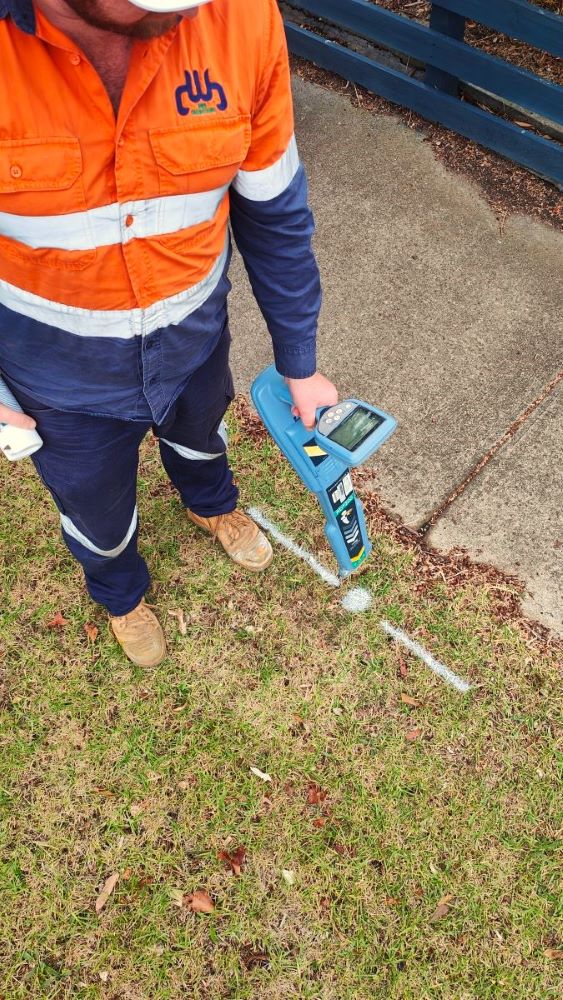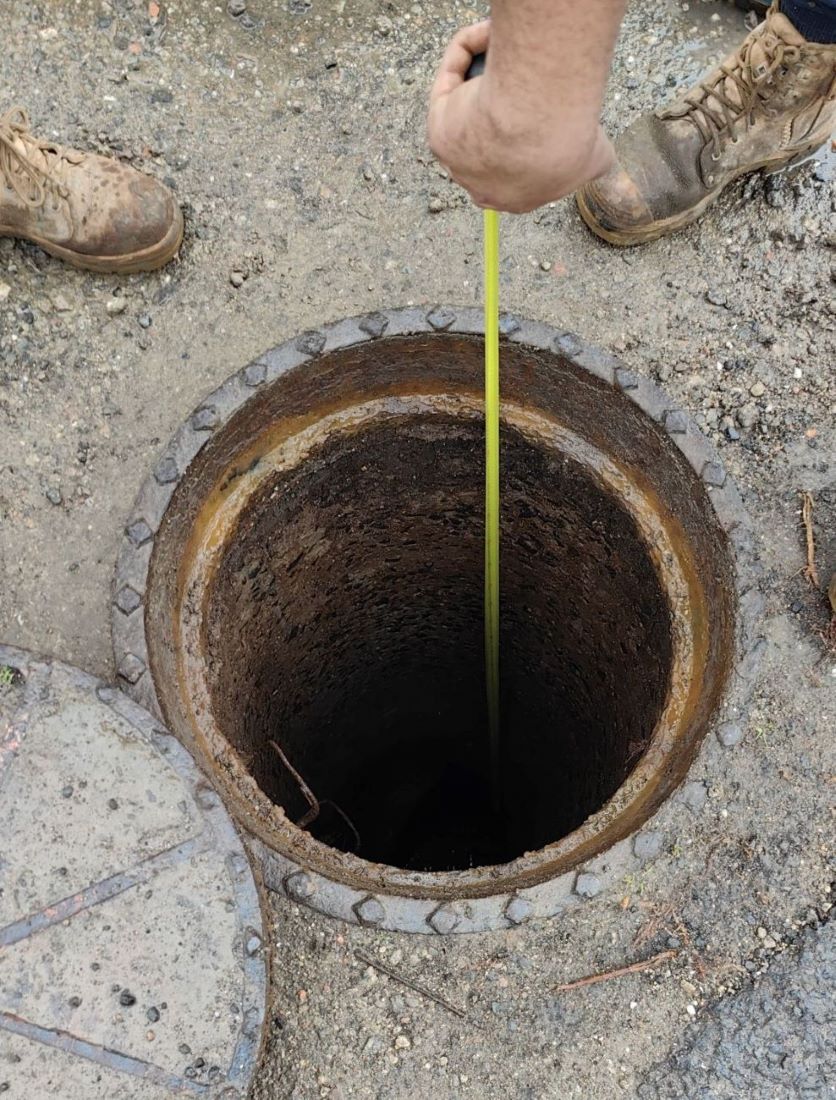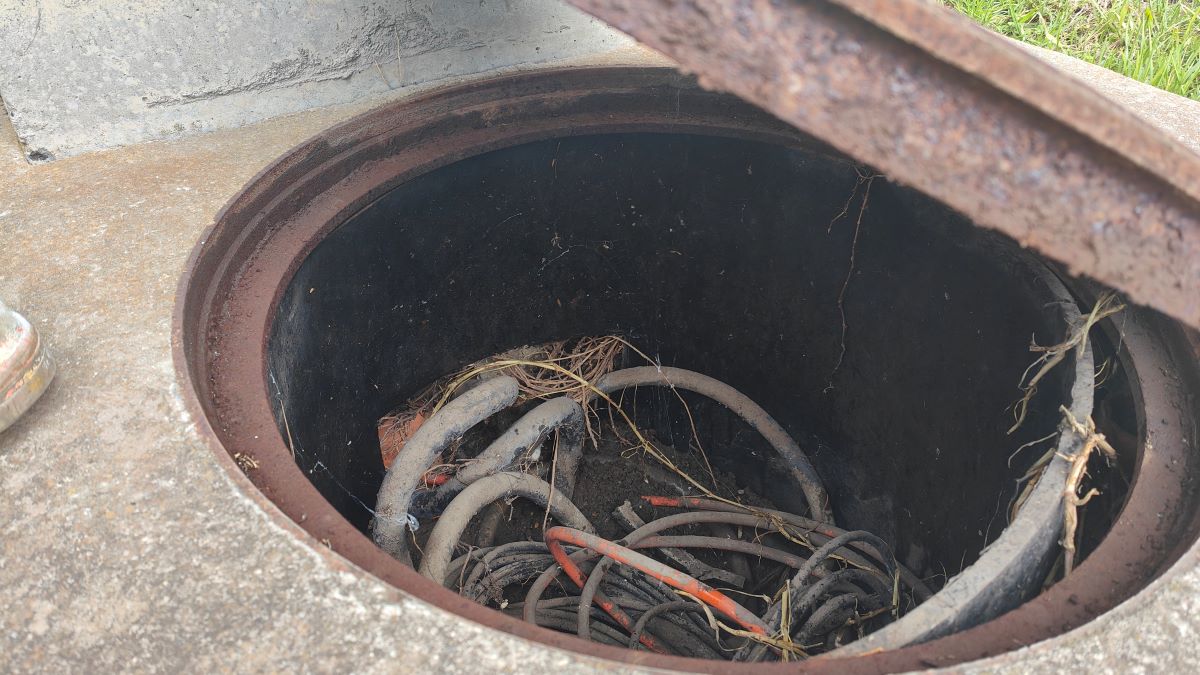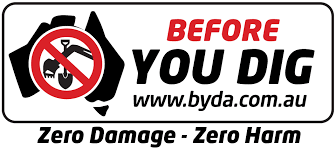Underground Utility Locating with Ground Penetrating Radar (GPR)

Discover what’s beneath the surface with our Ground Penetrating Radar (GPR) services— an advanced, accurate, and non-invasive method for locating underground utilities. The use of GPR compliments our EM Utility Locating by providing a way to locate non-conductive and unknow assets.
Key Benefits of GPR Utility Locating:
- Accurate Detection: Identifies pipes, cables, conduits, tanks, and voids with clarity
- Non-Destructive: Avoids the need for digging, preserving the environment and existing infrastructure.
- Versatile Solutions: Suitable for diverse ground types, including pavement, soil, and concrete.
- GPR can negate the need to open pits that are heavy, inaccessible or corroded permanently shut.
- Time-Efficient: Generates real-time data to streamline your decision-making process.
- Safety First: Mitigates the risk of utility strikes, reducing hazards and project delays.
- With a team of skilled professionals and advanced GPR equipment, we deliver reliable subsurface insights tailored to your specific needs.
Combined with EM Locating, our GPR service is excellent for:
- Utility mapping before construction or excavation.
- Locating buried water, gas, and sewer lines.
- Detecting abandoned pipelines and underground storage tanks.
- Assessing potential voids or anomalies beneath the surface.
Why choose DWB Service Locating for GPR asset locating?

We use the industry leading Screening Eagle GS8000 Ground Penetrating Radar that has been designed specifically for under ground pipe and cable locating. The advanced stepped frequency continuous wave technology provides excellent resolution over a wide depth range.
Engaging DWB Service Locating and our industry leading GPR can not only support detailed and efficient design, it can also minimise the risks associated with unintended utility strikes, including time delays, financial impacts and risk of injury to staff and the general public.
Our highly-skilled technicians are committed to working with you to understand your projects needs and to work with you to deliver the best possible outcomes in a timely and efficient way.
So, if you’ve got some construction works in the pipeline, contact us to get your project on the right track from the very start with DWB Service Locating.
How does ground penetrating radar work?

Ground penetrating radar (GPR) works by sending electromagnetic waves through specially designed antenna into the ground and recording the electromagnetic waves that are reflected back.
The electromagnetic waves are reflected back at different rates depending on the material they encounter and their different electrical properties. The waves that are reflected back are intercepted by the GPR with the data analysed speed and strength of the return signal, and this shows as visual data to the GPR operator.
Essentially the GPR identifies different density and electromagnet properties within the ground. For example, a 100mm fire service pipe has a significantly different density to the soil around it and this is identified on the GPD by a hyperbola that shows the position and depth that can be marked by the operator.


